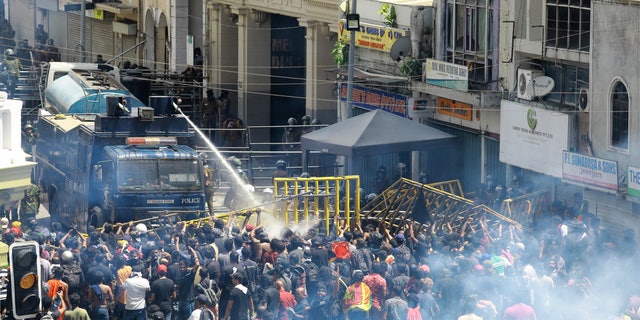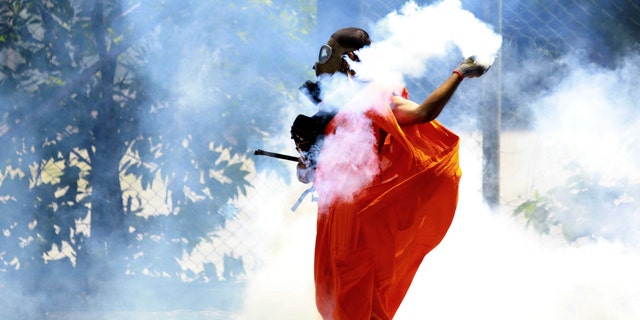Protestors storm Sri Lanka president’s house, clash with cops amid economic frustrations
Thousands of protesters in Sri Lanka’s commercial capital of Colombo barged through police barricades and stormed President Gotabaya Rajapaksa’s house on Saturday as part of an anti-government demonstration brought on by the country’s economic collapse.
Some protesters were carrying Sri Lankan flags and helmets as they broke into the president’s residence, according to video footage from local TV station NewsFirst.
The country, consisting of about 22 million, is suffering from a severe foreign exchange shortage, which has limited essential imports of fuel, food and medicine. This shortage has pushed the island into its worst financial situation in 70 years.
Rajapaksa has been blamed by many for the country’s economic decline. Protests have taken place since March in which demonstrators have demanded the president’s resignation. Saturday’s protest is believed to be one of the biggest anti-government marches this year.
CHINA: KNIFE ATTACK AT SHANGHAI HOSPITAL LEAVES FOUR INJURED
According to a witness, thousands of demonstrators forced their way into Colombo’s government district, breaking multiple police barricades before reaching Rajapaksa’s residence.
Police fired shots in the air but failed to halt the protestors from surrounding the president’s house, the witness said.
NHL DRAFT: THREE RUSSIANS SELECTED IN 1ST ROUND AMID CONCERNS

A severe shortage of fuel on the Asian island has stalled transportation services, but demonstrators still rode on buses, trains and trucks from different areas of the country to reach Colombo to protest the government’s economic failures.
The impoverished country in recent weeks has stopped receiving fuel shipments, which has forced school closures and limited petrol and diesel for services deemed essential.
WEST VIRGINIA DETECTS FIRST PROBABLE CASE OF MONKEYPOX

The country has been hit with massive fuel shortages and high inflation levels. Sri Lanka’s inflation hit 54.6% in June.
Political instability could hurt Sri Lanka’s discussions with the International Monetary Fund, from which they seek a $3 billion bailout, a restructuring of some foreign debt and fund-raising from multilateral and bilateral sources to soften the burden of the worsened dollar scarcity.
Reuters contributed to this report.
Read the full article Here


